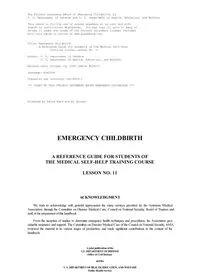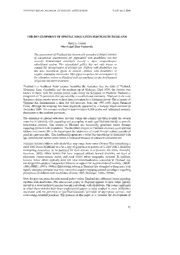
South African Developmental State PDF
Preview South African Developmental State
State–Society relations in the ‘South African Developmental State’: Integrated Development Planning and public participation at the local level Dissertation submitted to the School of Government, Faculty of Economics and Management Sciences at the University of the Western Cape in partial fulfilment of the requirements for the Degree of Doctor of Philosophy Sharon Patricia Penderis December 2013 Promoter: Professor Christopher Tapscott . DECLARATION I, Sharon Patricia Penderis, hereby declare that the work contained in this dissertation entitled State–Society relations in the ‘South African D evelopmental State’: Integrated Development Planning and public participation at the loca l level is my own work and that I have not previously submitted it, in part or in its entirety, at any university for a degree or examination. All sources have been indicated and acknowledged by means of references. Signature: ______________________________ Date: 18 December 2013 i . ACKNOWLEDGEMENTS While I take full responsibility for the content of this investigation, I am mindful that a number of people have played an important role in enabling me to complete this research. I hereby gratefully acknowledge the institutional assistance from the Deputy Vice Rector, Professor Ramesh Bharuthram, and the contribution of the African Centre for Citizenship and Democracy (ACCEDE), in terms of coordinating the preparation of the survey instrument, training the fieldworkers and funding the survey in Delft. To my promoter, Professor Christopher Tapscott, I wish to express my sincere gratitude for your assistance in moulding my research and for your keen insight and attention to detail. Your pertinent suggestions and knowledge of the broader topic contributed substantially towards improving the overall quality and depth of the dissertation. I wish to acknowledge my appreciation to my colleagues at the Institute for Social Development at the University of the Western Cape. Very special thanks are extended to Professor Julian May, the Director of the Institute, who afforded me the time to focus on my research and appointed additional staff to take over my duties. I further wish to extend my appreciation to my colleagues Priscilla Kippie, Dr Mulugeta Dinbabo, Dr Abdulrazack Karriem, Dr Ina Conradie, and Stanley Awaseh who have provided friendship and support in a number of areas. I finally wish to express my appreciation to the officials, councillors, ward committee members and residents of Delft who gave of their time to participate in this research and share their many experiences with me. Special thanks are extended to Rosemary Rau and Martin Julies for their valuable insights into the dynamics and functioning of Sub-council 5 and related activities provided by the City of Cape Town. ii . ABSTRACT In various formulations, the idea of a developmental state has appeared in official discourse in South Africa since the advent of democratic government in 1994, albeit that its adoption as state policy has been slow, uneven and inconsistent with the original East Asian model. What has been a feature of developmental stat e thinking in South Africa is the fact that the concept has been so poorly articulated in policy that it has come to mean different things to different state actors and to the public. This has been aggravated by the fact that the idea of a strongly interventionist developmental state has run counter to the idea of a diminished state enunciated in various neo-liberal policies. Moreover, unlike the authoritarian and top-down East Asian model, the government envisages a South African developmental state which is infused with democratic content where citizens assist in the formulation of policy from below. In its emphasis on a bottom-up approach to policy formulation the South African model differs markedly from the conventional idea of a developmental state which is heavily reliant on a strong central bureaucracy to drive economic growth. In the South African model local government has been assigned a pivotal role in addressing persistent economic exclusion and uneven development. A central tenet of this approach is the need for local authorities to institutionalise participatory processes at grassroots level and devise effective structures and processes to facilitate citizen participation in local affairs. In the light of the above, this thesis sets out to examine the manner in which a system of developmental local government is being implemented in the City of Cape Town. Taking as a case study the township of Delft, the study looks at the systems and processes (and particularly the process of integrated development planning) set in place to advance citizen participation. It examines the extent to which the model is perceived to be achieving its goals from the perspective of political office bearers, officials from different spheres of government and residents. The research found that notwithstanding an enabling legislative and policy framework, there is little comprehension of, or interest, in the idea of developmental local government and municipal officials largely pay lip service to participatory processes which are carried out in a top-down fashion and which neither empower local residents nor enhance their welfare. It also concluded that developmental government, in its present form, is contributing little to the establishment of a national developmental state. iii . TABLE OF CONTENTS DECLARATION i ACKNOWLEDGEMENTS ii ABSTRACT iii CHAPTER 1: SETTING THE SCENE 1.1 Contextualization 2 1.2 Towards a Developmental State in South Africa 3 1.3 Statement of the problem 7 1.4 Significance of the research 7 1.4.1 Aims of the study 8 1.4.2 Research propositions 9 1.5 Delineation of case study area 9 1.6 Research design and methodology 11 1.6.1 The research procedure 12 1.6.2 Quantitative methods 13 1.6.3 Qualitative methods 14 1.6.4 Processing, analysis and presentation of data 19 1.7 Structure of the thesis 19 CHAPTER 2: DEVELOPMENTAL STATES – A THEORETICAL OVERVIEW 2.1 East Asian Developmental States 21 2.2 Ideology and structure 23 2.3 Contextual determinants of the East Asian Developmental State 24 2.3.1 Historical and geo-political factors 24 2.3.2 Cultural factors 25 2.3.3 Socio-economic influences 26 2.3.4 Integration into the world economy 27 2.3.5 Geographical location and regionalism 28 2.3.6 The advantages of ‘late developers’ and ‘catch up’ 29 2.4 Defining features of the Developmental State 30 2.4.1 The national structure of finance 31 2.4.2 Centrality of the role of the state 31 2.4.3 Authoritarianism 32 2.4.4 Structure of the bureaucracy 32 2.4.5 National consensus and patriotism 33 iv . 2.4.6 Coordination and co-operation between big business and the state 34 2.5 Developmental States beyond East Asia 34 2.5.1 The relationship between democracy and development 34 2.5.2 Conceptualising Democratic Developmental States 37 2.5.3 Decentralisation 38 2.5.4 Conventional criteria needed to bu ild a Democratic Development State 38 2.6 21st Century developmental thinking 40 2.6.1 Good governance 40 2.6.2 The Institutional Perspective 41 2.6.3 Expanding capabilities 42 2.7 The prospects for Democratic Developmental States in Africa 43 2.8 Concluding comments 46 CHAPTER 3: THE EMERGING SOUTH AFRICAN DEVELOPMENTAL STATE 3.1 The rationale for a South African Developmental State 49 3.2 Defining features of a South African Developmental State 52 3.2.1 The central role of a political centre and a strong state 52 3.2.2 Intergovernmental Relations 53 3.2.3 Institution building 55 3.2.4 Building a strong state bureaucracy 56 3.2.5 Embeddedness and state–society synergies 58 3.3 Macro-economic policy and the Developmental State 60 3.3.1 The structure of South Africa’s economy 61 3.3.2 Redistributive capacity 64 3.3.3 A consistent and focused economic growth path 65 3.3.3.1 The Reconstruction and Development Programme 66 3.3.3.2 Growth Employment and Redistribution Programme 67 3.3.3.3 The Accelerated Shared Growth Initiative 68 3.3.3.4 The New Growth Path 70 3.3.3.5 The National Development Plan 71 3.4 Building a people-centred state 74 3.5 Building consensus and setting a national development agenda 74 3.6 Developmental State challenges 77 3.7 Concluding comments 78 CHAPTER 4: DEVELOPMENTAL LOCAL GOVERNMENT 4.1 Developmental Local Government 80 4.1.1 The developmental role of Local Government 82 v . 4.1.2 Legislative and policy framework for Developmental Local Government 83 4.1.2.1 The Constitution of the Republic of South Africa 83 4.1.2.2 The Local Government Transition Act (Act 209 of 1993) 84 4.1.2.3 The White Paper on Local Government 87 4.1.2.4 The Municipal Structures Act 88 4.1.2.5 The Municipal Systems A ct 90 4.2 Integrated Development Planning 90 4.2.1 Defining Integrated Development Planning 93 4.2.2 Integrated Development Planning and Intergovernmental Relations 96 4.2.3 The purpose of Integrated Development Planning 98 4.2.4 Public participation in Integrated Development Planning 100 4.2.5 Integrated Development Planning and Performance Management Systems 102 4.3 Concluding comments 105 CHAPTER 5: THE THEORY AND PRACTICE OF PUBLIC PARTICIPATION 5.1 Evolution of people-centred development approaches and public participation 107 5.2 Understanding participation 108 5.3 Politicising and institutionalising participation 110 5.4 Broadening the participatory agenda: Agency and citizenship 111 5.5 Formulations of place and space 114 5.5.1 Participatory spaces 115 5.5.2 Contested participation: Issues of power 117 5.6 Levels of participation 121 5.7 From subject to citizen: An explanatory framework 124 5.8 Public participation in South Africa 126 5.8.1 Government’s commitment to public participation and participatory governance 127 5.8.2 Legislative and policy framework for public participation 129 5.8.3 The impact of economic liberalisation on participatory governance 131 5.8.4 Current public participation approaches 134 5.8.5 Spaces of participation 134 5.8.5.1 Institutionalised participatory spaces 135 5.8.5.2 Popular invented participatory spaces 136 5.8.6 Current participatory realities 138 5.9 Concluding Comments 140 vi . CHAPTER 6: OVERVIEW OF THE CITY OF CAPE TOWN AND DELFT 6.1 Development Local Government in the City of Cape Town 141 6.1.1 The Integrated Development Plan 143 6.1.2 The sub-council system 146 6.1.3 The ward committee system 147 6.2 Overview and contextualisation of Delft on the Cape Flats 149 6.3 The physical and infrastructural environment 150 6.3.1 Housing characteristics 150 6.3.2 Service provision and community facilities 153 6.3.3 Local facilities and amenities 154 6.4 The socio-cultural environment 155 6.5 The economic environment 156 6.5.1 Income structure 156 6.5.2 Household assets 157 6.5.3 General living conditions and quality of life 157 6.6 Concluding comments 161 CHAPTER 7: PARTICIPATORY DYNAMICS AND POLITICAL PERSPECTIVES OF RESIDENTS 7.1 The political environment and governance system 163 7.1.1 Sub-council 5 164 7.1.2 The ward system 165 7.2 Integrated Development Planning 167 7.3 Institutionalised participatory spaces 168 7.3.1 Ward councillors and ward committees 169 7.3.2 Sector organisations 179 7.4 Popular participatory spaces 181 7.5 Political opinions and perceptions 184 7.6 Concluding comments 189 CHAPTER 8: POLITICAL AND OFFICIAL PERSPECTIVES OF INTEGRATED DEVELOPMENT PLANNING AND PUBLIC PARTICIPATION 8.1 Intergovernmental Relations and integration of governance efforts 186 8.2 Integrated Development Planning 193 8.2.1 The integrated development planning process 194 8.2.2 Public participation in integrated development planning 196 8.2.3 Alignment of local, provincial and national development plans 200 8.2.4 Challenges 204 8.2.4.1 The complexity of the Integrated Development Planning process 204 vii . 8.2.4.2 The scheduling of the IDP 205 8.2.4.3 The size and diversity of wards 206 8.3 The Sub-council and Ward Committee System 208 8.3.1 The sub-council system 208 8.3.2 The ward committee system 214 8.4 Concluding comments 221 CHAPTER 9: CONCLUSION AND RECOMMENDATIONS 9.1 Focus of the research 227 9.2 Theoretical reflections 228 9.2.1 20th Century Developmental States 229 9.2.2 21st Century Developmental States 231 9.2.3 Developmental states and participatory democracy 232 9.2.4 The South African Developmental State 235 9.3 Summary findings of the research 236 9.3.1 Macro-level influences 237 9.3.2 Micro-level influences 240 9.4 Policy implications and recommendations 243 9.5 Contribution and significance of the research 246 9.6 Concluding comments 246 REFERENCES 248 ANNEXURE 1 Accede Citizenship Survey 299 ANNEXURE 2 Focus Group Schedule 319 viii . LIST OF FIGURES Figure 5.1 From subject to citizen 124 Figure 6.1 Ward committee reporting structure 148 Figure 6.2 Location of Delft within the Ci ty of Cape Town 150 Figure 6.3 Housing satisfaction 152 Figure 6.4 Desire to move from Delft 153 Figure 6.5 Increase in criminal activity 160 Figure 6.6 Current living conditions 161 Figure 7.1 Delft ward boundaries 165 Figure 7.2 Knowledge of and input into Integrated Development Planning 167 Figure 7.3 Participatory hierarchy 170 Figure 7.4 Trust in local government structures 172 Figure 7.5 Community interests 178 Figure 7.6 Trust in Street Committees and SANCO 183 Figure 7.7 Satisfaction with South Africa as a democracy 186 Figure 9.1 Theoretical and analytical framework of Developmental States 228 Figure 9.2 Factors impacting on efforts to build a South African Developmental State 237 ix
Description:The list of books you might like

The 48 Laws of Power

Rich Dad Poor Dad

The Subtle Art of Not Giving a F*ck

The Spanish Love Deception
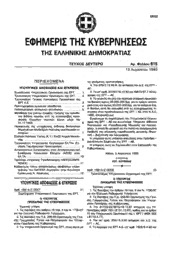
Greek Government Gazette: Part 2, 1993 no. 615
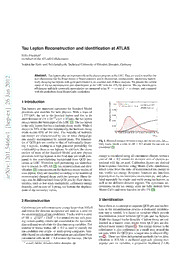
Tau Lepton Reconstruction and Identification at ATLAS
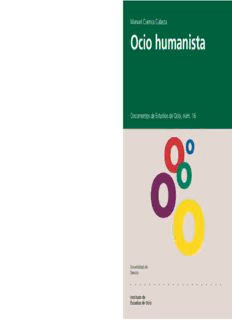
Ocio humanista: dimensiones y manifestaciones actuales del ocio
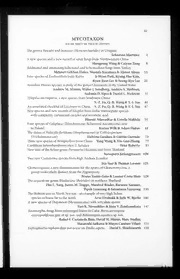
Mycotaxon 2006: Vol 96 Table of Contents

The crime scene : a visual guide

The Adventures of Harry Revel by Sir Arthur Thomas QuillerCouch

Taste of Home September/October 2018
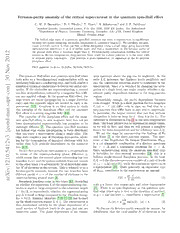
Fermion-parity anomaly of the critical supercurrent in the quantum spin-Hall effect

Bon Dia Aruba (21 Januari 2006)
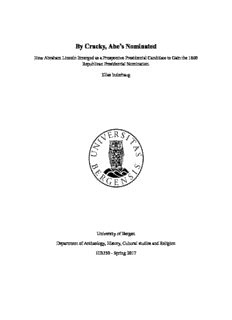
By Cracky, Abe's Nominated
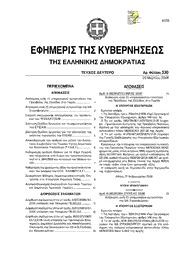
Greek Government Gazette: Part 2, 2006 no. 330

Greek Government Gazette: Part 7, 2006 no. 916

Iron Troikas - The New Threat from the East (2006)
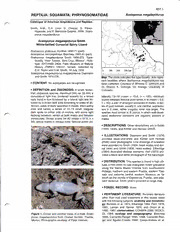
Sceloporus megalepidurus
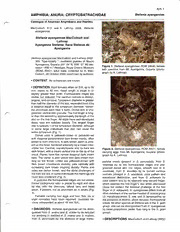
Stefania ayangannae

Mice Other Poems by Gerald Bullett
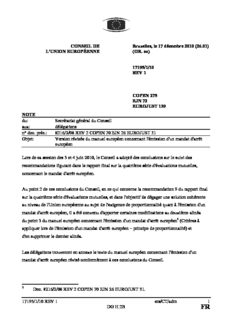
17195/1/10 REV 1 ers/CT/adm 1 DG H 2B CONSEIL DE L'UNION EUROPÉENNE Bruxelles, le 17 ...

